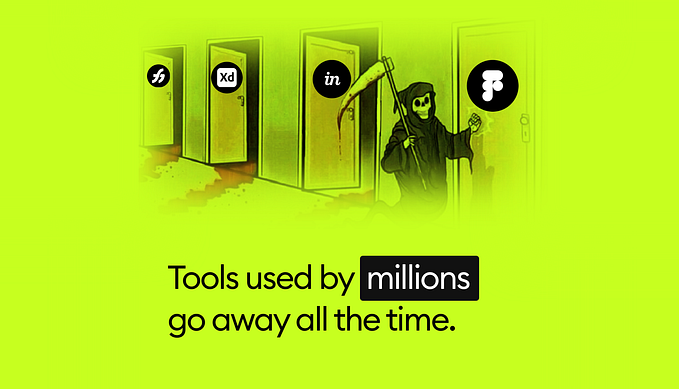(my) 3 Rules for Usability
No matter how complicated is the context where a product will be used, it has to feel as safe and painless as possible. This need is evident when we see products as solutions to problems: we won’t solve a problem by providing a solution that is a problem on itself, right?
Usability is the one that measures how easy a user interface is to use. Side by side with utility, it says how usable a product is. It is a part of the user experience. And it is yet another thing for us, Product Managers, to keep an eye on, regardless of how involved in the design are we.
Luckily for us, usability is mostly common sense. It’s about making the product self-evident (or at least self-explanatory) and removing question marks in its users’ heads — Don’t make them think. As a lot of common sense, though, usability is not necessarily obvious until someone points it out.
Here is what I point out to be what we need to do on IT products to add to their usability:
Provide space location
Lost in space, who has ever felt it? Everyone who has lived past the 90s and has experienced the Internet. Here’s a little story:
Imagine you found a hole behind your wardrobe and, as curious as you are, you decide to enter it. It happens that the hole is a portal that drops you into a world you have no idea of its location and dimension, and you have no idea how to move from there. You might classify this episode as cool and adventurous, and, in that case, you might spend time exploring those grounds. But what if I tell you that you have infinite portals like those in your life and that you have seen infinite different words and that you can quit those worlds every time and go back to familiar places? Perhaps then you wouldn’t want to spend so much time in such a world as the one you just entered. Maybe it would just be an annoying and time-consuming experience when you have infinite other places to go and endless other things to do.
Internet (and other IT) in its raw state is just like that. Its experience is missing many of the cues we’ve relied on all our lives to negotiate space: no sense of location, no sense of scale, no sense of direction. All those space senses are crucial and, in IT products, we need to care even more for them since they were mostly artificially created.
- Make sure navigation is spotless. Navigation is the determination of position and direction, and it can let us know about scale as well. Imagine a map with a GPS position on top. It’s an abstraction of the scheme of things. It tells us where we are; what’s else there; it lets us know our way around and how to move with confidence. An IT product does not translate into a typical map with streets, mountains, and rivers. But it can be translated into a navigation bar that unfolds into several levels and has highlighted the current page/screen, for example.
- Reassure location is well identified. Maps are great, but you still need a sign with a name at the beginning of every street, in the right place, and with a consistent and prominent look. Street names, page/screen names, same same — needed.
Reflect any logic visually
Finding logic in life is hard enough — what’s its meaning anyway? Let’s not make it hard for everyone to find logic in our product’s content.
A clear visual organization guides the eye and makes any content more readable.
- Check if things that are related logically are also related visually. Related elements should be grouped close together and separate from the unrelated others to create clearly defined areas.
- Check out for hierarchy as well. The more important something is, the more prominent it should be. And don’t allow this difference to be light; make use of contrast. If elements are not the same, then they should be very different. Avoid merely similar elements; it looks sloppy.
- On the other end, if elements are the same, then make sure they look the same. Repetition of visual elements according to their logic creates a consistent look and strengths unity.
- Another crucial trick for visual connection is alignment. Check if every element is aligned with something else. Nothing should be placed arbitrarily.
Keep the noise down
Everything is noise until proven otherwise. And noise is proven to distract from what is useful.
Keeping noise down is a way to give the other elements power. Out with the needless and what matters will be more prominent.
- Question if any existing instruction can be made obvious instead (or at least self-explanatory). The main thing about instructions is that nobody is going to read them. When they are necessary, cut as much as possible.
- Look for cutting small talk as well. It can’t be polite or friendly to conceal important information between millions of please’s and thank you’s or even meaningless illustrations. Please, reconsider doing so unless it really adds something, thank you!
- Make sure things are being called by their names. Synonyms and metaphors are great, but only in literature. They let the writer be creative and make the reader think. Here our goal is precisely the opposite — not to make people think. And we can be creative anywhere else.
I like to believe that products following these 3 rules are on the right usability path.
And now, is it over? Isn’t usability like any other metric? Can’t we keep improving it? Spot on, it’s test and iteration time!










